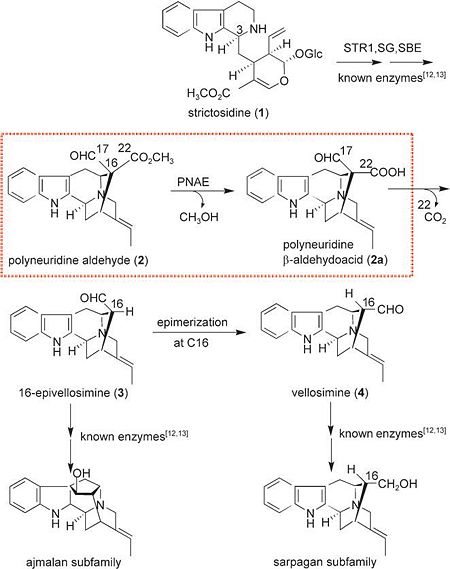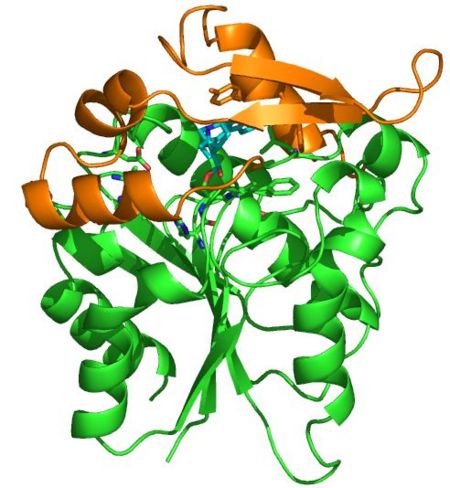Polyneuridine Aldehyde Esterase
From Proteopedia
(Difference between revisions)
| Line 9: | Line 9: | ||
[[Image:Pathway.JPG|left|450px|thumb]] | [[Image:Pathway.JPG|left|450px|thumb]] | ||
| - | + | {{clear}} | |
For the biochemical characterization of '''PNAE''', the enzyme was isolated from plant cell cultures of the Indian medicinal plant ''Rauvolfia serpentina'' and partially sequenced; the '''PNAE''' cDNA was then cloned and overexpressed in ''Escherichia coli''. | For the biochemical characterization of '''PNAE''', the enzyme was isolated from plant cell cultures of the Indian medicinal plant ''Rauvolfia serpentina'' and partially sequenced; the '''PNAE''' cDNA was then cloned and overexpressed in ''Escherichia coli''. | ||
Revision as of 10:08, 8 August 2016
| |||||||||||
3D structures of polyneuridine aldehyde esterase
2wfm – SePAE (mutant) – Serpentwood
2wfl – SePAE
3gzj – SePAE + 16-epi-vellosimine
References
- ↑ Mattern-Dogru E, Ma X, Hartmann J, Decker H, Stockigt J. Potential active-site residues in polyneuridine aldehyde esterase, a central enzyme of indole alkaloid biosynthesis, by modelling and site-directed mutagenesis. Eur J Biochem. 2002 Jun;269(12):2889-96. PMID:12071952
- ↑ Yang L, Hill M, Wang M, Panjikar S, Stockigt J. Structural basis and enzymatic mechanism of the biosynthesis of C9- from C10-monoterpenoid indole alkaloids. Angew Chem Int Ed Engl. 2009;48(28):5211-3. PMID:19496101 doi:10.1002/anie.200900150
Proteopedia Page Contributors and Editors (what is this?)
Alexander Berchansky, Michal Harel, Liuqing Yang, Joel L. Sussman



